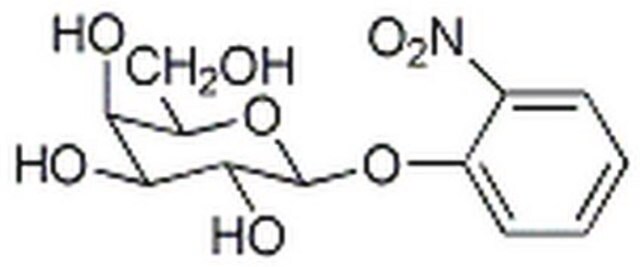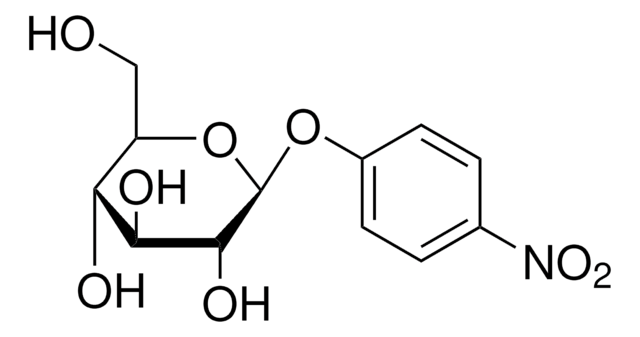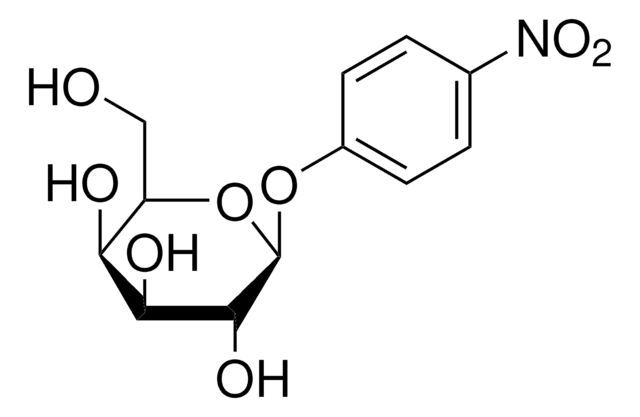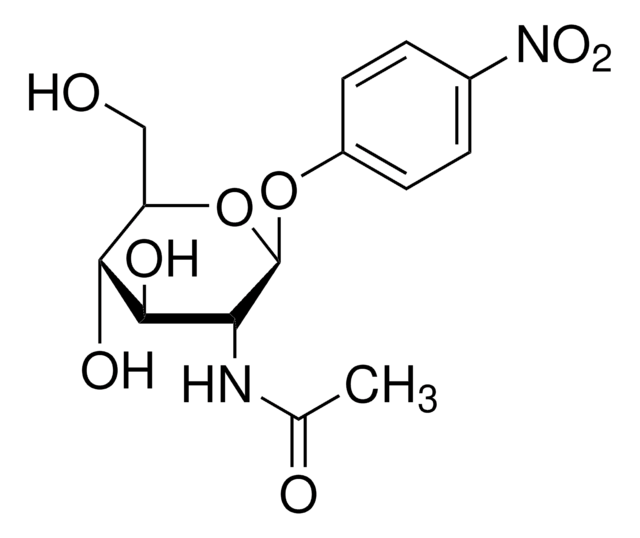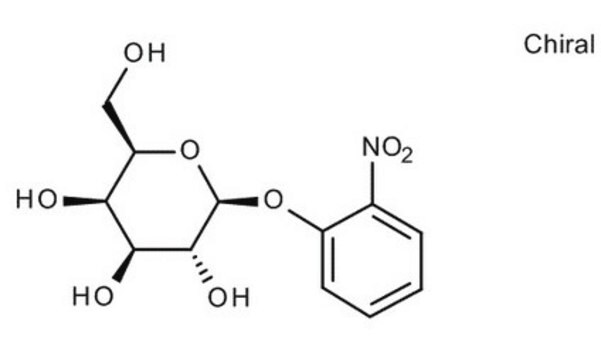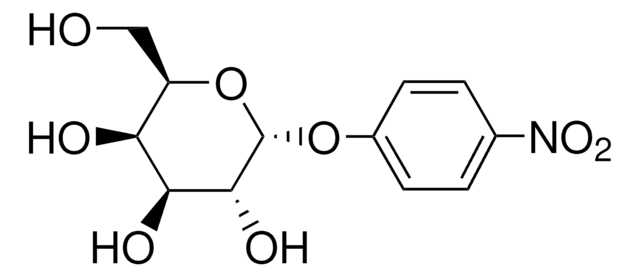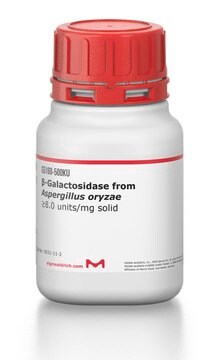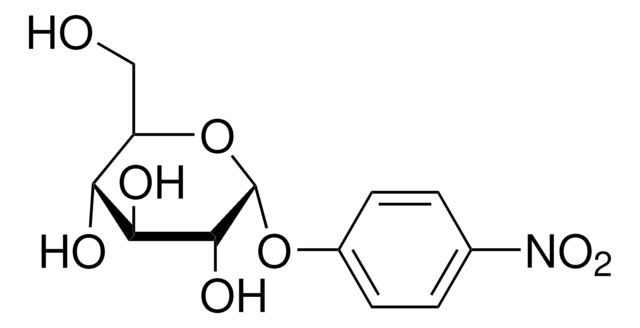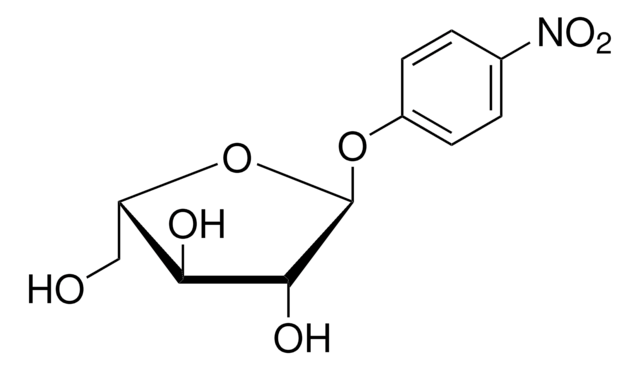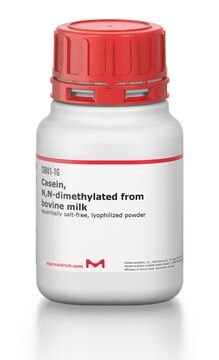N8016
2-Nitrophenyl β-D-glucopyranoside
≥99% (TLC), powder
Synonyme(s) :
2-Nitrophenyl-beta-D-glucopyranoside, o-NPG
About This Item
Produits recommandés
Nom du produit
2-Nitrophenyl β-D-glucopyranoside, powder
Essai
≥99% (TLC)
Niveau de qualité
Forme
powder
Solubilité
water: 50 mg/mL
Température de stockage
−20°C
Chaîne SMILES
OC[C@H]1O[C@@H](Oc2ccccc2[N+]([O-])=O)[C@H](O)[C@@H](O)[C@@H]1O
InChI
1S/C12H15NO8/c14-5-8-9(15)10(16)11(17)12(21-8)20-7-4-2-1-3-6(7)13(18)19/h1-4,8-12,14-17H,5H2/t8-,9-,10+,11-,12-/m1/s1
Clé InChI
KUWPCJHYPSUOFW-RMPHRYRLSA-N
Vous recherchez des produits similaires ? Visite Guide de comparaison des produits
Application
Actions biochimiques/physiologiques
Code de la classe de stockage
11 - Combustible Solids
Classe de danger pour l'eau (WGK)
WGK 3
Point d'éclair (°F)
Not applicable
Point d'éclair (°C)
Not applicable
Équipement de protection individuelle
Eyeshields, Gloves, type N95 (US)
Faites votre choix parmi les versions les plus récentes :
Déjà en possession de ce produit ?
Retrouvez la documentation relative aux produits que vous avez récemment achetés dans la Bibliothèque de documents.
Les clients ont également consulté
Articles
Today, diverse studies report the benefits of probiotics, such as inhibitory effects on pathogens, aid in the management or prevention of chronic intestinal inflammatory diseases or atopic syndromes, and support to the immune system. Potential beneficial applications abound, researchers continue to evaluate the effictiveness and clarify the mechanisms of action of probiotics.
Notre équipe de scientifiques dispose d'une expérience dans tous les secteurs de la recherche, notamment en sciences de la vie, science des matériaux, synthèse chimique, chromatographie, analyse et dans de nombreux autres domaines..
Contacter notre Service technique
